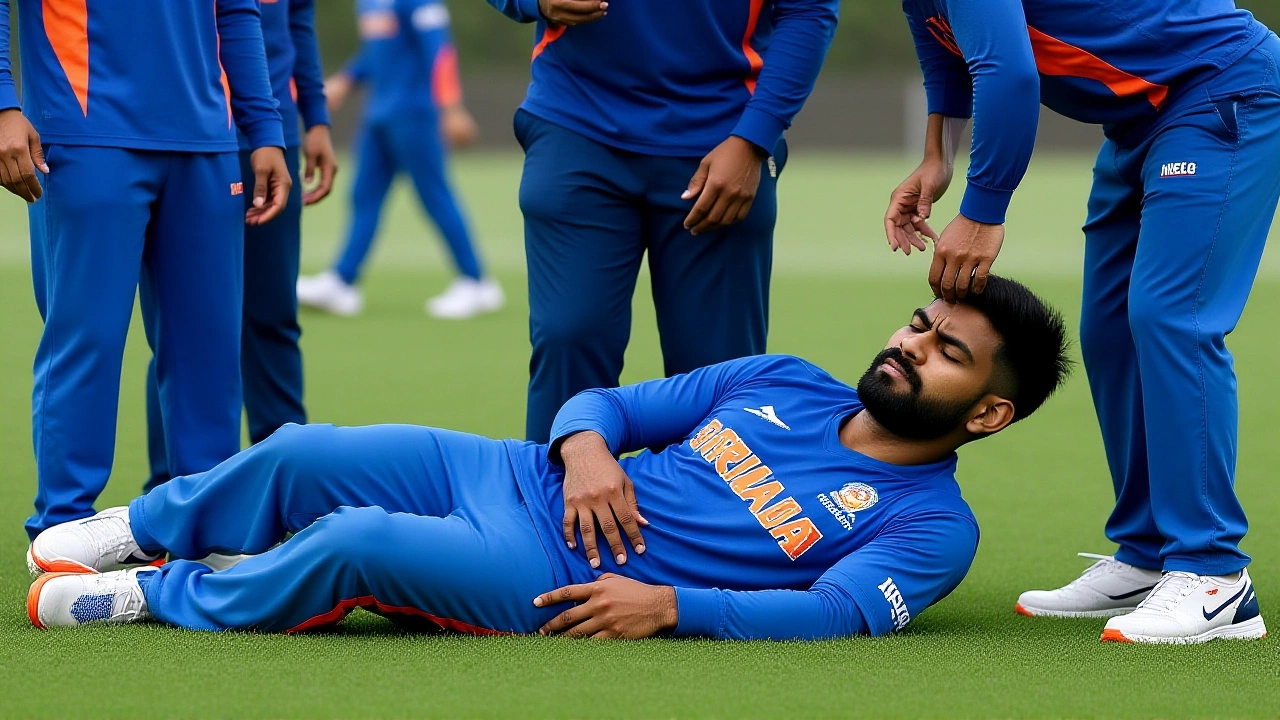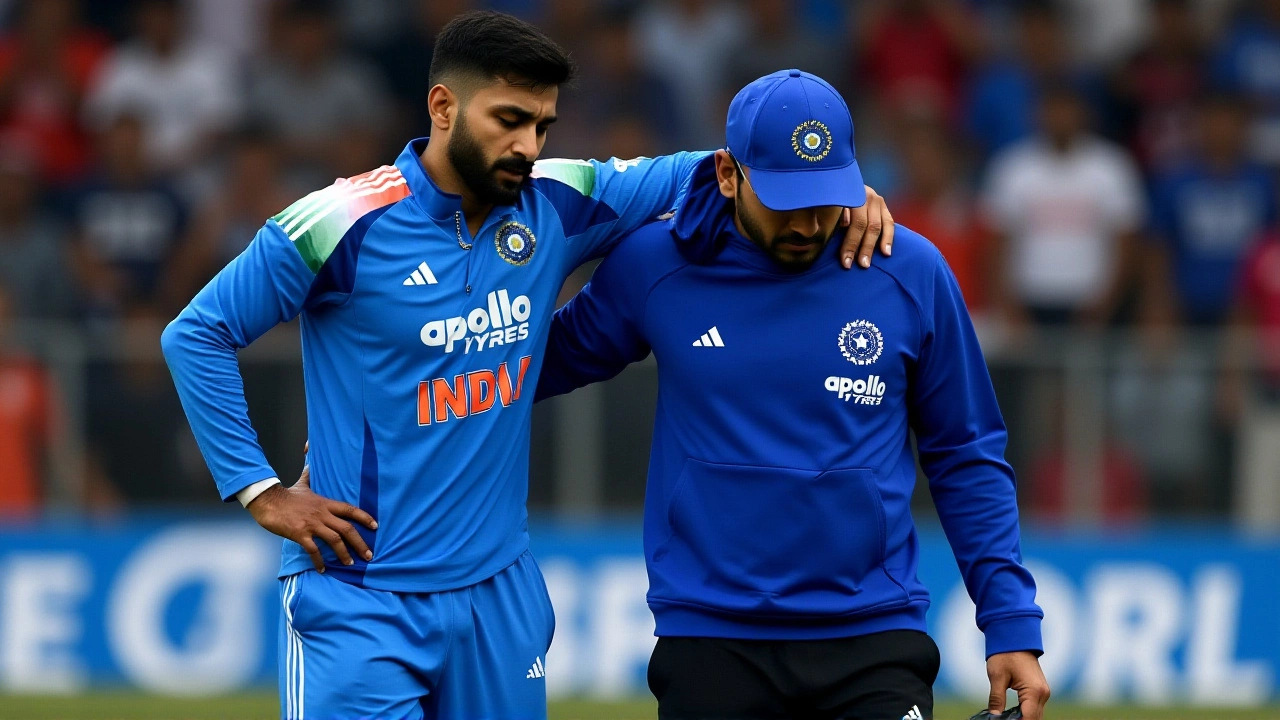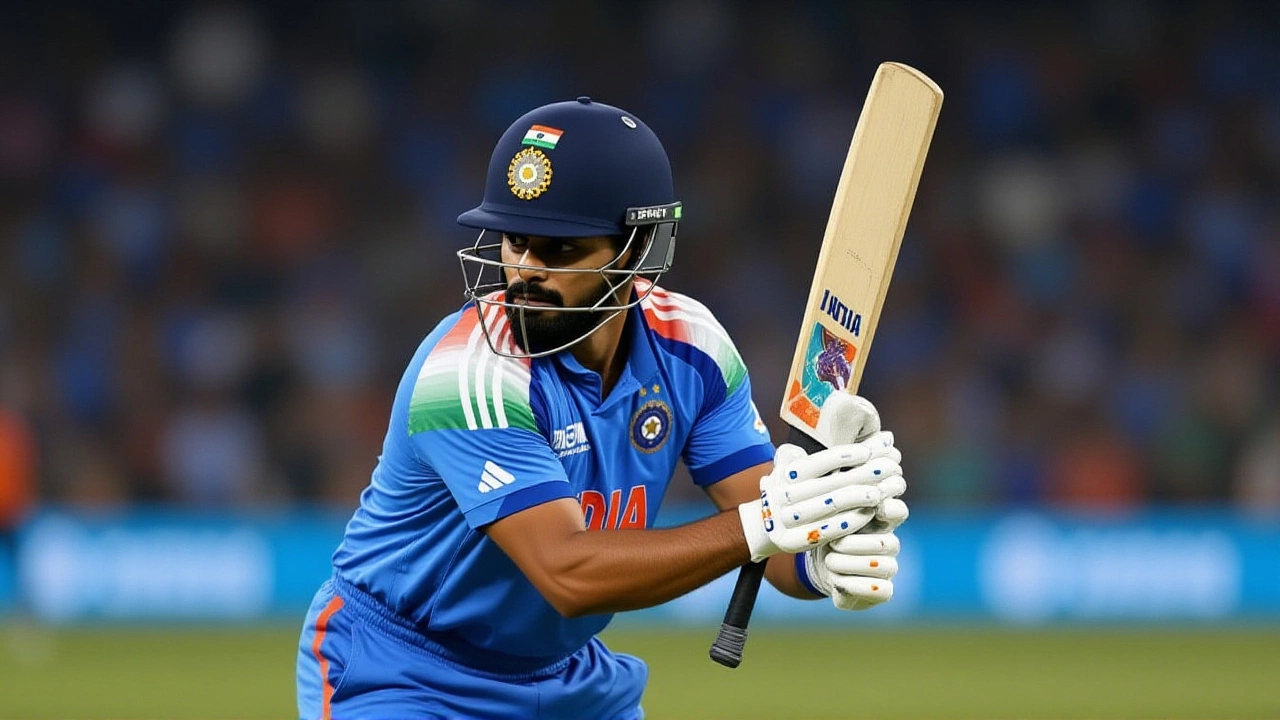When Shreyas Iyer, the 30-year-old Indian ODI vice-captain, dove full-length to take a catch at the Sydney Cricket Ground on October 25, 2025, he didn’t just end a batting partnership—he nearly lost his life. The impact of his left rib cage hitting the hard turf while dismissing Alex Carey fractured three ribs, which punctured his spleen, triggering massive internal bleeding. Within minutes, the Board of Control for Cricket in India (BCCI) medical team sprang into action, saving him from a 25% chance of death. By 3:55 PM AEDT, he was en route to St Vincent’s Hospital Sydney, where he received 1,850 milliliters of blood and spent six hours stabilizing in the ICU. This wasn’t just a sports injury. It was a near-fatal trauma that exposed a dangerous gap in cricket’s fielding safety protocols.
How a Catch Nearly Killed a Star
It happened in the 42nd over of India’s ODI against Australia. Iyer, sprinting from mid-off, leapt to his left to catch a skier from Carey. The ball landed cleanly in his glove—but his left lower rib cage slammed into the unforgiving pitch at full speed. The force, estimated at over 1,200 newtons by trauma analysts, fractured ribs 8, 9, and 10. One shard pierced the spleen, causing a 4.2 cm laceration with active bleeding. "It’s like a car crash in slow motion," said Dr. Elizabeth Tan, Head of Trauma Surgery at St Vincent’s. "The spleen is fragile. One hard impact, and it explodes." Within 90 seconds, BCCI physio Bharat Arun and fielding coach Ramakrishnan Sridhar had Iyer immobilized, applied pressure to his flank, and activated emergency protocols. "We knew it wasn’t just pain. It was internal. You don’t get that kind of collapse without bleeding," Sridhar later told Hindustan Times.
Medical Race Against Time
Between 6:00 PM and 9:30 PM AEDT on October 25, Iyer’s systolic blood pressure plunged to 85 mmHg—critical territory. His heart raced at 138 bpm. By midnight, fluid resuscitation and oxygen support had stabilized him. Scans confirmed a Grade 3 splenic injury, one of the most severe non-surgical types. He avoided an emergency splenectomy only because the bleeding slowed on its own after transfusion. The BCCI’s medical team, led by team doctor Dr. Prasanna Shah, coordinated with three Australian specialists and Indian hepatobiliary expert Dr. Rajiv Lochan, who was on standby in Gurgaon. "Had he been two minutes slower getting to the hospital, or if the bleeding hadn’t slowed naturally, he’d have needed surgery—and even then, survival wasn’t guaranteed," said Dr. Michael Chen, the radiologist who interpreted the CT scans.
BCCI’s Emergency Response and Family’s Journey
On October 27, Devajit Saikia, BCCI’s Honorary Secretary, issued a calm but urgent statement from Wankhede Stadium in Mumbai: "He is medically stable and recovering well." But behind the scenes, the team was on high alert. Vitals were checked every 15 minutes for the first 48 hours. Iyer’s mother, Smita Iyer, and sister, Shreya Iyer, boarded IndiGo flight 6E-512 from Mumbai’s Chhatrapati Shivaji Maharaj International Airport on October 29 at 8:45 AM IST, aiming to reach Sydney by 8:30 PM local time. "We don’t know if he’ll play again," Smita told reporters before departure. "But we know he’s alive. That’s enough for now."

Why This Changes Cricket Forever
This is the second life-threatening incident involving an Indian cricketer in Australia in 18 months—after Rishabh Pant’s 2022 car crash. It’s not an isolated case. In 2023, England’s Sam Curran suffered a similar rib-spleen injury during a fielding mishap in Perth. Yet, cricket still lacks mandatory protective gear for fielders beyond gloves. No chest guards. No rib protectors. No standardized impact assessments on pitches. "We train for bowling, batting, catching—but not for surviving the ground," said former Indian captain Rahul Dravid in an off-record interview. "This isn’t just about Iyer. It’s about every kid who dives for a catch on concrete-like turf."
What’s Next for India’s Team and Safety Rules
With Iyer sidelined indefinitely, India’s batting order for the November 15 ODI series against South Africa in Johannesburg is in chaos. Coach Gautam Gambhir confirmed that Sarfaraz Khan and Abhishek Sharma will be evaluated by November 5. But the bigger question looms: What will the BCCI do differently? On November 1, Roger Binny, BCCI President, will convene an emergency meeting of the Medical Advisory Committee to review fielding safety. Potential changes include: mandatory rib protectors for frontline fielders, padded turf assessments at international venues, and real-time impact sensors in fielding gear. "If we don’t act now," said one insider, "another Iyer might not be so lucky."

Historical Context: Cricket’s Hidden Risks
Cricket has long celebrated the bravery of fielders. But the sport’s infrastructure hasn’t kept pace. In 2019, New Zealand’s Colin de Grandhomme fractured his skull diving for a catch in Wellington. In 2021, Sri Lanka’s Dasun Shanaka required emergency surgery after a similar rib-spleen injury in Brisbane. Yet, until now, no governing body mandated protective equipment. The ICC’s current fielding guidelines, last updated in 2017, mention "appropriate footwear" and "gloves," but nothing for torso protection. "We treat fielding like a skill, not a high-risk activity," said Dr. Anjali Mehta, a sports trauma specialist at Apollo Hospital, Delhi. "It’s time we treated it like rugby or American football."
Frequently Asked Questions
How serious is a Grade 3 splenic laceration?
A Grade 3 splenic laceration involves a deep tear (3–5 cm) with active bleeding, often requiring blood transfusion and ICU monitoring. Without timely intervention, mortality ranges from 20% to 30%. Shreyas Iyer’s case was critical—he lost over 1.8 liters of blood—but avoided surgery due to spontaneous clotting and rapid medical response. Recovery typically takes 8–12 weeks, with strict no-contact protocols.
Why didn’t Shreyas Iyer wear protective gear?
Cricket has no mandatory torso protection for fielders, even at the international level. While batsmen wear pads and helmets, fielders rely only on gloves and athletic shorts. The BCCI and ICC have historically resisted such gear, citing tradition and mobility concerns. Iyer’s injury has now forced a global re-evaluation of this outdated stance.
What’s the timeline for Iyer’s return to cricket?
Medical experts estimate a minimum of 10–12 weeks for full recovery, with no physical activity for the first 6 weeks. Even if he heals quickly, returning to high-intensity fielding before 16 weeks would be risky. His availability for India’s December 2025 T20 World Cup is now highly unlikely. The BCCI has not set a return date, emphasizing "gradual, monitored progress."
How will India replace Iyer in the batting lineup?
Sarfaraz Khan and Abhishek Sharma are the leading candidates, both known for aggressive middle-order play. Sarfaraz, 27, has scored two centuries in domestic cricket this year, while 24-year-old Abhishek brings power-hitting and fielding versatility. The final decision, due by November 5, will hinge on form and adaptability to Australian conditions. Iyer’s absence leaves a 50+ run scoring gap in the top 4.
Has this ever happened to another cricketer before?
Yes. In 2019, New Zealand’s Colin de Grandhomme suffered a skull fracture after diving for a catch. In 2021, Sri Lanka’s Dasun Shanaka had a splenic rupture after a similar impact in Brisbane. Both required surgery. Yet, no global rule changes followed. Iyer’s case is the first to trigger a formal BCCI safety review since the Pant incident, signaling a potential turning point in player protection standards.
What’s being done to improve fielding safety now?
BCCI President Roger Binny has called an emergency meeting on November 1 to review fielding protocols. Potential changes include mandatory rib protectors for frontline fielders, impact sensors in fielding gear, and mandatory pitch hardness assessments before international matches. The ICC may also revise its guidelines to classify fielding as a "high-risk activity," similar to wicketkeeping.

Hi there, I'm Ethan Kingswood, a sports enthusiast with a particular passion for cycling. I've been involved in the world of sports for over a decade and have gained expertise in various disciplines. My love for cycling has led me to write engaging articles and blog posts about it, sharing my knowledge and experiences with fellow cycling enthusiasts. I also enjoy participating in cycling competitions and training others to improve their skills. My ultimate goal is to inspire more people to embrace the exciting and rewarding world of cycling.